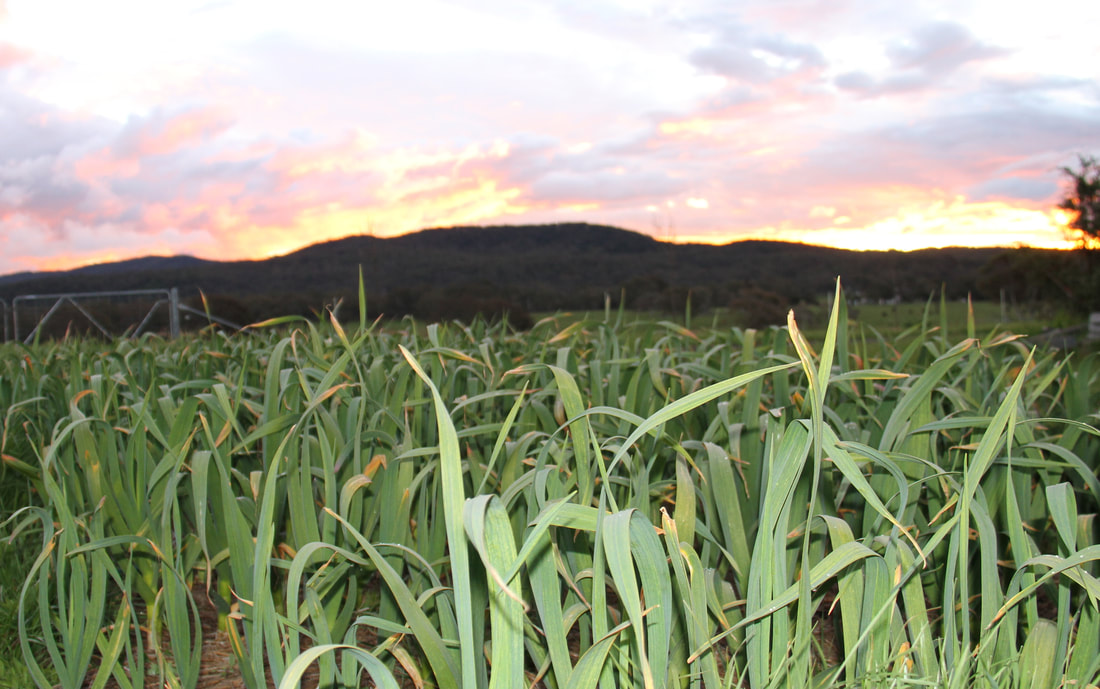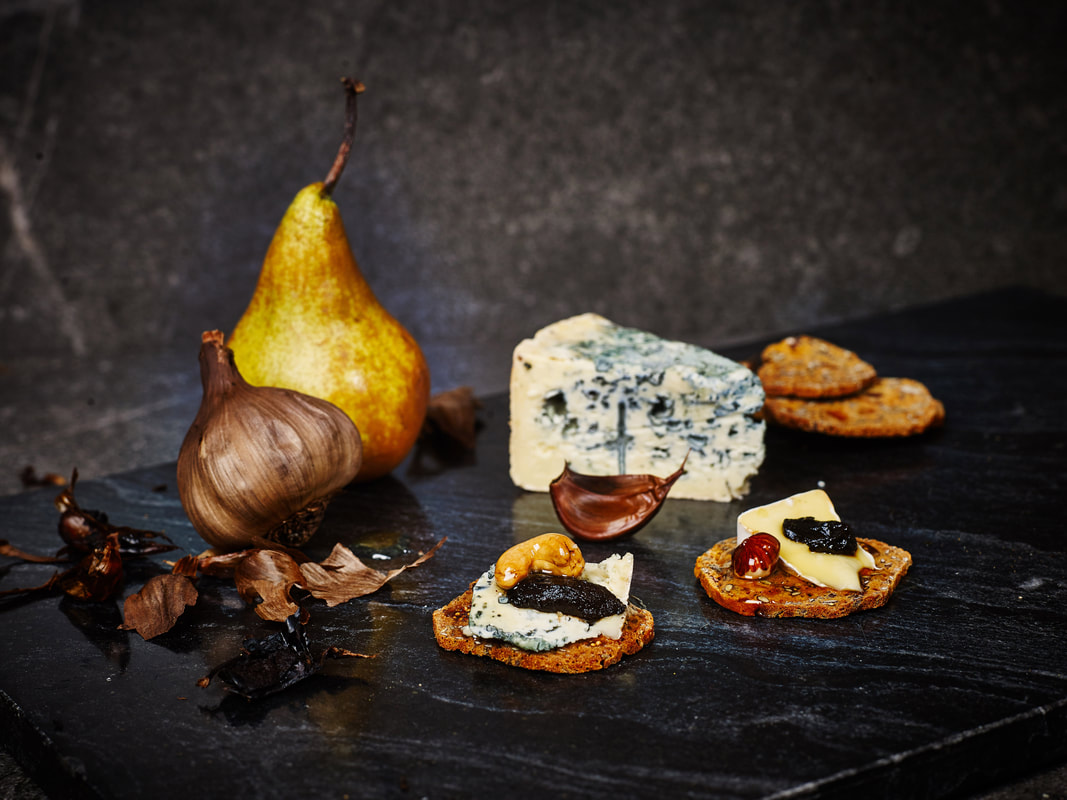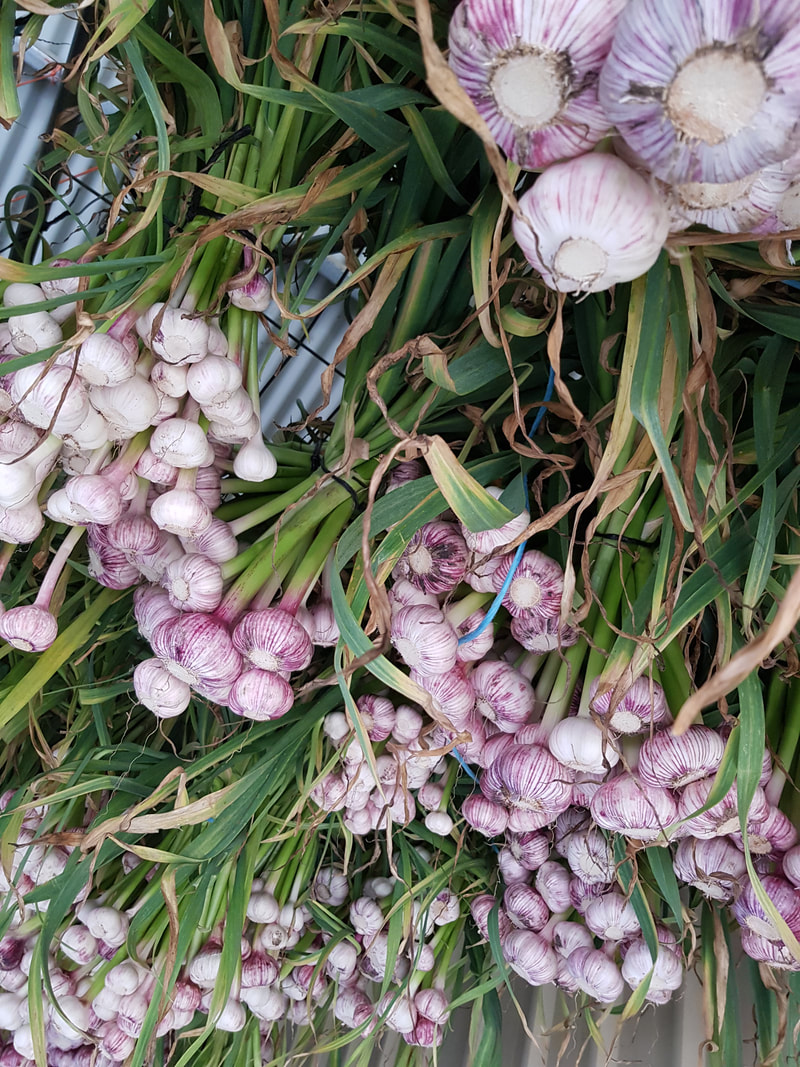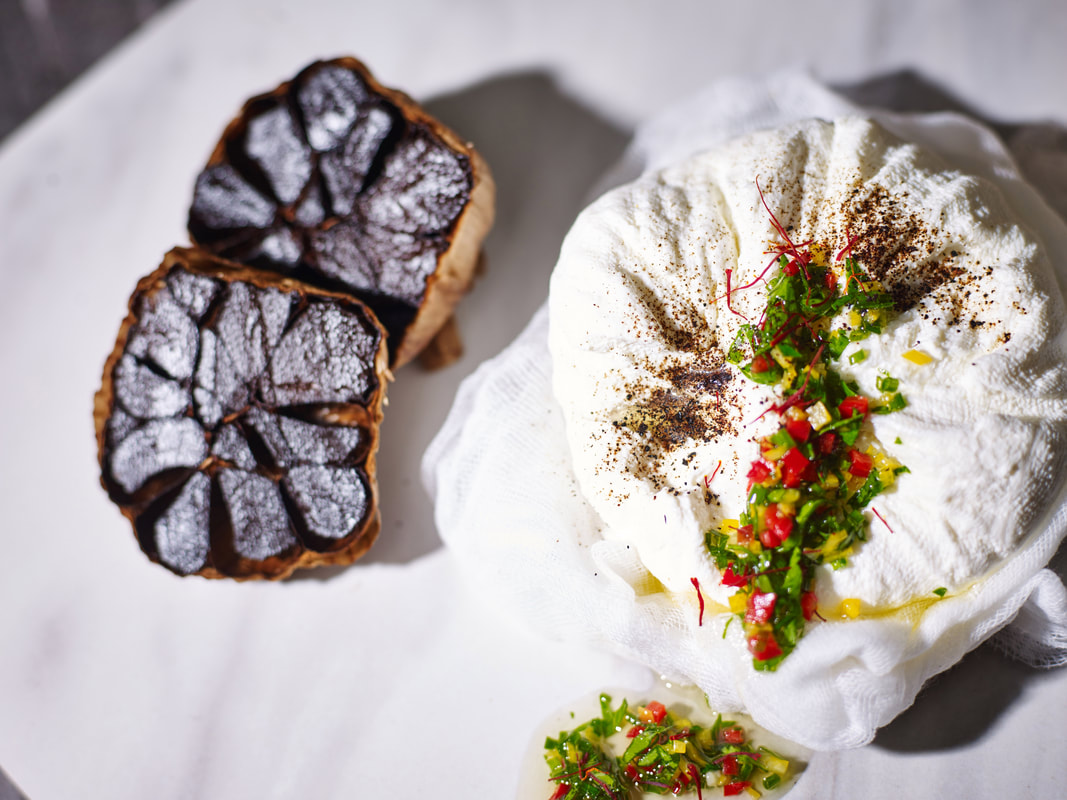|
Thanks to Turno Roy from Keto.com.au for this interesting information on the keto friendly nature of garlic, and especially black garlic! Embarking on a keto diet brings with it a myriad of questions about what’s on the menu. Among the many queries, one that often surfaces is whether garlic fits into this low-carb regime. Known for its bold flavour and numerous health benefits, garlic is a staple in kitchens worldwide. But when carbs are your concern, it's essential to scrutinise everything that goes onto your plate. You might wonder how something as small as a garlic clove impacts your daily carb limit. Understanding the nutritional breakdown of garlic will help you decide if it can be a part of your ketogenic journey. Let’s dive into the specifics and uncover how you can incorporate this powerful ingredient into your keto diet without compromising your goals. Key Takeaways
Understanding Keto Diet Basics What Is a Keto Diet? A Keto diet, short for ketogenic diet, focuses on consuming high-fat, moderate-protein, and low-carbohydrate foods. This nutritional regimen pushes your body into a state known as ketosis. During ketosis, your body burns fat for energy instead of carbs. The shift from using carbohydrates to fats as a primary energy source can lead to weight loss and improved metabolic health. By reducing your carb intake to typically fewer than 50 grams per day, your liver starts producing ketones from fat, which serve as an alternative energy source for the brain and other organs. Key Components of Keto Foods Keto-friendly foods prioritise fats and proteins while minimising carbs. Examples include meats, such as beef, pork, and chicken, fatty fish like salmon and mackerel, eggs, butter, and cream. In terms of plant-based fats, avocados and coconut oil are staples. Nuts and seeds, including almonds, walnuts, and flaxseeds, play a crucial role due to their high fat and low carbohydrate content. Vegetables are also integral but focus on leafy greens like kale and spinach, which are low in carbs. Understanding the ideal balance of these components helps you maintain ketosis and meet your dietary goals effectively. Garlic and Its Nutritional Profile Transitioning from the general discussion of keto-friendly foods, it’s crucial to zoom in on the specifics of garlic and its place in the ketogenic diet. Understanding the nutritional content of garlic is key to making informed decisions about incorporating it into your keto meal plan effectively. Macronutrient Breakdown of Garlic Garlic, a popular flavour enhancer in many cuisines worldwide, contains a minimal number of carbohydrates. A typical clove of garlic, weighing about 3 grams, provides approximately 1 gram of carbohydrates. This small amount comprises mainly net carbs due to the low fibre content. Additionally, garlic contains traces of protein and almost no fat. Here's a quick overview of its macronutrient composition per clove:
Health Benefits of Garlic Aside from its compatibility with the ketogenic diet regarding carbohydrates, garlic boasts several health benefits that are advantageous for those following any diet plan. Firstly, garlic is renowned for its immune-boosting properties, largely due to its allicin content, which is highly beneficial in fighting common colds and other infections. Furthermore, regular garlic consumption supports cardiovascular health by helping to lower blood pressure and cholesterol levels. Studies also suggest that garlic may assist in regulating blood sugar levels, which is particularly beneficial for maintaining steady energy on a keto diet. Additionally, the anti-inflammatory effects of garlic can contribute to overall wellness and reduced inflammation in the body. Through its rich array of health benefits and low-carb profile, garlic stands out as a favourable addition to a ketogenic diet. By including garlic in your meals, you not only enhance flavours but also leverage its health-promoting properties to support your dietary goals. Is Garlic Keto-Friendly?
Carbohydrate Content in Garlic Garlic, known for its robust flavour and health benefits, boasts a low carbohydrate profile, making it ideal for the ketogenic diet. Typically, one clove of garlic contains just about 1 gram of carbohydrates. This small amount proves minimal in the context of a daily intake, particularly within a diet that limits carbs to about 20-50 grams per day. Importantly, the carbohydrates in garlic are primarily in the form of fibre which aids digestion and doesn't significantly spike blood sugar levels. How Garlic Fits into a Keto Diet Integrating garlic into your keto lifestyle is straightforward due to its carb content being incredibly low. You can enjoy garlic in various forms – fresh, powdered, or as an oil – and incorporate it into numerous keto-friendly dishes. Whether you're sautéing vegetables, marinating meats, or preparing sauces, garlic adds significant flavour without compromising your carb limit. Moreover, garlic's anti-inflammatory and immune-boosting properties support overall health, complementing the health benefits of a ketogenic diet perfectly. Thus, garlic is not only manageable within the carb restrictions of keto but also beneficial for its nutritional contributions. Using Garlic in Keto Recipes Keto-Friendly Garlic Dishes Garlic adds a rich flavour to dishes without increasing carbohydrate intake significantly, making it an excellent ingredient for your keto recipes. Consider incorporating garlic into main dishes like garlic butter steak or roasted garlic cauliflower. Each of these meals leverages garlic's robust flavour while keeping carbs in check. Garlic butter steak, for instance, combines the hearty, fatty goodness of steak with the aromatic depth of garlic-infused butter. On the other hand, roasted garlic cauliflower transforms a simple vegetable into a flavourful side dish that compliments any main course. Tips for Incorporating Garlic into a Keto Diet To maximise the benefits of garlic in a keto diet, focus on the amount you use and how it's incorporated. Start by adding garlic to your recipes in its natural form as minced or whole cloves. This method ensures you receive all the potential health benefits without added sugars or carbohydrates that some processed garlic products might contain. Another useful tip involves using garlic-infused oils. Drizzling garlic oil over salads, meats, or cooked vegetables enhances flavour instantly while adhering to your carb limit. Remember, a little garlic goes a long way in terms of flavour, so you won’t need much to make your dishes stand out. Black garlic particularly offers a big umami flavour boost just by adding 1 teaspoon black garlic paste to a dish. This will help you keep your carbohydrate intake within the keto-friendly range, all while enjoying the delicious taste and health benefits garlic offers. Conclusion Garlic not only fits within your keto diet but enhances it by adding flavour and health benefits to your meals. By incorporating fresh garlic or garlic-infused oils into your dishes you can enjoy the immune-boosting properties and keep your carb intake low. Remember to opt for natural forms of garlic and steer clear of processed options that may contain hidden sugars. With these tips you'll find it easy to maintain your ketogenic lifestyle while enjoying the rich flavours garlic has to offer.
0 Comments
When it comes to culinary trends, black garlic has emerged as a true superstar in recent years, captivating the palates of food enthusiasts worldwide. A recent report, titled "Best Statistical Black Garlic Market Growth Set to Surge Significantly during 2023 to 2030," highlights the remarkable growth in black garlic sales and identifies Garlicious Grown as a key player in this burgeoning industry. Black Garlic: A Flavourful Revolution Black garlic, with its sweet, umami-rich flavour and health benefits, has taken the culinary world by storm. What was once a well-kept secret in Asian cuisine has now become a global sensation, finding its way into kitchens and dishes of all kinds. Its distinct taste and versatility have made it a favourite among chefs and home cooks alike. The Report's Revelations The report, available at here paints an exciting picture for the future of black garlic. It predicts substantial growth in the black garlic market from 2023 to 2030. This growth is attributed to the increasing awareness of black garlic's nutritional benefits, its unique flavour profile, and its applications in a wide range of dishes. Garlicious Grown: A Leading Light One standout feature of this report is the recognition of Garlicious Grown as a key worldwide player in the black garlic industry. Garlicious Grown has consistently impressed with its commitment to quality, innovation, and sustainable farming practices. As a pioneer in the cultivation and production of black garlic, they have played a pivotal role in popularizing this culinary gem. Why Garlicious Grown Stands Out
Garlicious Grown's rise to prominence is no accident. They have harnessed their passion for garlic and their dedication to delivering the finest products to create a brand that stands head and shoulders above the rest. Their black garlic products have consistently wowed consumers, chefs, and food critics alike, earning them a well-deserved reputation for excellence. The Future of Black Garlic As the report suggests, the future of black garlic looks brighter than ever. Its versatility and unique flavour make it an ideal ingredient for a wide range of culinary creations, from gourmet dishes to everyday meals. With Garlicious Grown leading the way, we can expect to see even more exciting developments in the black garlic industry in the coming years. Conclusion The "Best Statistical Black Garlic Market Growth Set to Surge Significantly during 2023 to 2030" report underscores the phenomenal growth and potential of the black garlic market. Garlicious Grown's inclusion as a key player in this thriving industry is a testament to their dedication and commitment to bringing the best of black garlic to food lovers worldwide. As black garlic continues to make its mark in the culinary world, Garlicious Grown will undoubtedly be at the forefront of this flavour revolution, providing us all with the opportunity to elevate our culinary experiences with this remarkable ingredient. So, get ready to enjoy the future—it's sure to be filled with the irresistible allure of black garlic. Food preservation has been essential throughout human history. One fascinating preservation method that has gained popularity in recent years is black garlic. Although it is a culinary delight, black garlic also serves as an innovative way to extend the shelf life of garlic while transforming its flavour. In this blog post, we'll explore the ancient technique of using black garlic as a food preservation method and how it has been revived in modern times. 1. History of Black Garlic Preservation: The process of black garlic preservation dates back centuries and is believed to have originated in Asia, particularly in Korea, Japan, and Thailand. It was traditionally used as a way to store garlic for extended periods without spoilage. The exact origin and time of its development are unclear, but the aging methods used to create black garlic were valued for their ability to transform garlic into a unique and flavourful ingredient. 2. Aging Process: Black garlic preservation involves subjecting fresh garlic bulbs to a controlled fermentation and aging process. The garlic bulbs are typically kept in a warm and humid environment for several weeks to months. During this time, enzymatic reactions and the Maillard reaction occur, resulting in the transformation of garlic's flavour, texture, and colour. 3. Controlled Temperature and Humidity: To create black garlic, maintaining a specific temperature and humidity is crucial. The garlic bulbs are typically stored in a controlled environment with temperatures ranging from 60 to 75 degrees Celsius and high humidity. These conditions encourage the desired chemical reactions, including the Maillard reaction, which gives black garlic its characteristic dark colour. The image below is from Najman et al Influence of Thermal Processing on the Bioactive, Antioxidant, and Physicochemical Properties of Conventional and Organic Agriculture Black Garlic (Allium sativum L.)Appl. Sci. 2020, 10(23), 8638; https://doi.org/10.3390/app10238638 4. Chemical Changes and Flavour Development: During the aging process, significant chemical changes take place within the garlic bulbs. The Maillard reaction leads to the development of melanoidins, pigments responsible for the black colour of the cloves. As a result, the pungent and spicy compounds in fresh garlic, such as allicin, are broken down into various sulphur compounds, resulting in a mellow, sweet, and umami-rich flavour profile with hints of caramel and balsamic notes. 5. Extended Shelf Life: Black garlic's preservation process significantly extends the shelf life of garlic compared to fresh garlic. While fresh garlic bulbs typically have a relatively short storage life, black garlic can be stored for up to two years or even longer when kept in a cool and dry environment. This extended shelf life allows for greater culinary flexibility and reduces waste. 6. Culinary Applications: The preserved black garlic can be used in a wide range of culinary applications. Its unique flavour profile makes it a versatile ingredient, adding depth and complexity to various dishes. It can be incorporated into sauces, marinades, dressings, soups, stews, stir-fries, and even desserts. Black garlic's sweet and savoury taste enhances the overall flavour profile of dishes, making it a sought-after ingredient for chefs and food enthusiasts. It is key however, to not see black garlic as a replacement for fresh garlic. While adding garlic flavour, it is not great to chop and fry black garlic at the beginning of a dish (as you may with fresh garlic). Frying black garlic off hard, leads to little burnt black dots in the pan rather than that beautiful black garlic richness! 71. Health Benefits: While black garlic is primarily known for its culinary merits, it also offers potential health benefits. Like fresh garlic, black garlic contains certain compounds, such as antioxidants and polyphenols, which may have positive effects on health. Additionally, black garlic is known to have higher levels of S-allyl cysteine, a compound associated with potential heart health benefits.
Conclusion: The ancient technique of preserving garlic to create black garlic has been revived in modern times. This innovative method not only extends the shelf life of garlic but also transforms its flavour, creating a unique ingredient with a mellow, sweet, and umami-rich taste. As a versatile culinary ingredient and potential source of health benefits, black garlic has found its place in the culinary world, captivating chefs and gourmet cooks. You asked so here is the answer! Having just finished three days at the Good Food and Wine Show, this is a common question. Garlic is a versatile ingredient used in cuisines around the world for its pungent flavour and numerous health benefits. However, black garlic has emerged as an intriguing alternative to regular garlic, offering a distinct taste and potential additional advantages. In this blog post, we'll compare black garlic and regular garlic, exploring their differences in flavour, nutritional content, and culinary use. Flavour Profile: Regular Garlic: Fresh garlic is known for its sharp, pungent, and sometimes spicy flavour. It has a pronounced "bite" that can vary in intensity depending on the variety and freshness of the garlic. When cooked, regular garlic develops a mellow and slightly sweet flavour. Black Garlic: Black garlic undergoes a oxidation process that transforms its flavour profile. We take beautiful hard neck ‘Monaro Purple’ garlic with white flesh through a 30 day low slow “cook” to transform to black garlic. The pungency and spiciness of regular garlic are mellowed, giving way to a unique combination of savoury umami, caramel-like sweetness, and hints of balsamic and molasses. Garlic notes come through the flavour after the initial sweetness. Black garlic offers a more complex and subtle flavour compared to regular garlic. Nutritional Content: Regular Garlic: Fresh garlic is highly regarded for its nutritional value. It is a good source of vitamins C and B6, manganese, and selenium. Garlic is also known for containing sulphur compounds, such as allicin, which is associated with various health benefits, including potential immune-boosting and cardiovascular effects. Black Garlic: While the transformation of white to black garlic cause some changes in its nutritional composition, it still retains several beneficial compounds found in regular garlic. Black garlic has higher antioxidant levels than fresh garlic, offering enhanced antioxidant benefits. Additionally, black garlic contains S-allyl cysteine, a compound associated with heart health benefits. The reduced allicin levels make black garlic more easily digested. Culinary Use: Regular Garlic: Fresh garlic is widely used in cooking for its strong flavour and aroma. It is a staple in lots of savoury dishes, including stir-fries, sauces, soups, marinades, and roasted or grilled meats and vegetables. The pungency and spiciness of regular garlic can add depth and character to a wide range of recipes. Black Garlic: Black garlic's unique flavour makes it a versatile ingredient for culinary experimentation. Don’t use it in place of fresh garlic – don’t chop finely and fry off early in a dish. All you will have is little burnt black dots! Add black garlic towards the end of a dish, stirring through pasta or risotto. The warmth will bring out the rich flavour offering that finishing touch to your cooking. Black garlic pairs well with both savoury and sweet ingredients, making it suitable for sauces, dressings, pasta dishes, risottos, and even desserts. Its rich umami notes can enhance the complexity of flavour creating a memorable dish. Shelf Life:
Regular Garlic: Fresh garlic bulbs have a relatively short shelf life. They can typically be stored for a few weeks to a couple of months when kept in a cool, dry place. However, they may begin to sprout or deteriorate over time. Black Garlic: Black garlic has a significantly longer shelf life compared to regular garlic. The oxidation process contributes to its stability, allowing it to be stored for several years. Proper storage in a cool and dry environment helps maintain the quality and flavour of black garlic. Conclusion: While regular garlic and black garlic both have their unique qualities, they offer distinct flavours and culinary experiences. Regular garlic provides a bold and pungent taste, while black garlic offers a more complex and sweet umami profile. Additionally, black garlic retains beneficial compounds found in regular garlic and provides enhanced antioxidant and heart health benefits. Whether you choose regular garlic for its robust flavour or black garlic for its intriguing taste and potential additional advantages, both varieties can be valuable additions to your culinary repertoire. Introduction: Black garlic, often referred to as "black gold," is a unique culinary ingredient that undergoes a fascinating transformation through a process known as ageing. This article delves into the art of ageing garlic and explores how time and controlled conditions turn ordinary garlic cloves into a prized delicacy. Getting Started: A key first step is to grown beautiful white garlic. We use a purple hard neck Monaro garlic that grows well in our area. It is that beautiful garlic with white skins and fine purple veins that you see in quality fruit stores. This variety has an ideal sugar content producing beautiful full flavoured black garlic. Understanding the Process: The transformation of garlic into black garlic involves a slow, natural oxidation process. Although often described as fermentation, which typically involves the action of microorganisms, black garlic is made through a controlled enzymatic reaction. Whole bulbs of garlic are placed in a humid, temperature-controlled environment, typically around 60°C, for an extended period, typically ranging from two to six weeks. This low and consistent heat triggers enzymatic reactions within the garlic, resulting in the gradual caramelization of natural sugars and Maillard reactions that give black garlic its characteristic dark colour, soft texture, and complex flavour profile. Flavour and Aroma Profile: One of the most intriguing aspects of black garlic is its flavour and aroma. During the ageing process, the pungent and sharp flavours commonly associated with raw garlic mellow and transform into something entirely different. Black garlic offers a unique umami taste with hints of sweetness, tanginess, and even notes of balsamic vinegar and molasses. Its aroma is often described as earthy, with hints of garlic, caramel, and fermented fruits. These flavour and aroma profiles make black garlic a versatile ingredient that can enhance a wide range of dishes. Culinary Uses: Black garlic's unique flavour profile makes it a prized ingredient in culinary creations. Its sweet, tangy, and umami taste can enhance both savoury and sweet dishes. Black garlic can add flavour in sauces, dressings, marinades, and soups. It can also be mashed and spread onto bread or incorporated into dips and spreads. Additionally, black garlic pairs well with meats, seafood, roasted vegetables, cheese and even desserts like chocolate or ice cream, adding depth and complexity to the overall dish. Availability and Storage: While black garlic was once relatively uncommon and difficult to find, its popularity has grown, and it can now be purchased in specialty food stores, gourmet markets, or online. When purchasing black garlic, look for plump and soft cloves with a glossy, black exterior. Proper storage is essential to maintain its quality. It is best stored in a cool, dry place, away from direct sunlight, and can typically be kept for several years.
Conclusion: The art of ageing garlic into black gold is a remarkable process that transforms the ordinary into something extraordinary. Black garlic's unique flavour, aroma, and potential health benefits make it a sought-after ingredient for culinary enthusiasts and health-conscious individuals alike. Whether you use it to elevate your home-cooked meals or experiment with new and exciting recipes, black garlic is a culinary treasure that showcases the magic of time and transformation. Spanish researchers have published findings on the cardiac benefits of black garlic on rat hearts. When subjected to ischaemia, rats taking black garlic extract had a smaller reduction in heart contractility and better vasodilation of their coronary arteries. Not only does it taste good....
See more including the reference at our science review. Noticed this interesting story about a garlic museum in Pinili in the Phillipines devoted to their premium local crop, garlic. Seems all things garlic are reflected there - including black garlic, garlic chips and salts. The building was the former hideout of the “Sandatahans” (militia) of rebel bishop Gregorio Aglipay, the founder of the first Filipino independent church, during the Filipino-American War.
Read more at: http://newsinfo.inquirer.net/786991/museum-hosts-garlic-memories-of-bishops-rebellion#ixzz49XITMwwt |
Archives
May 2024
Categories
All
|



















 RSS Feed
RSS Feed
